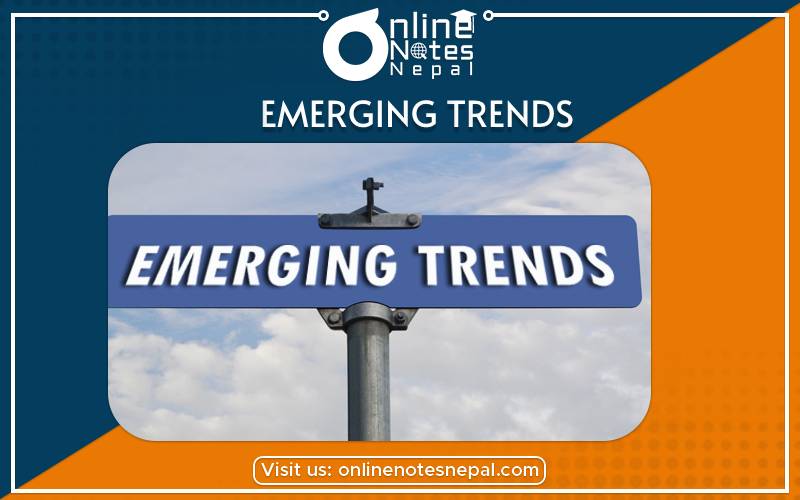Published by: Zaya
Published date: 22 Jun 2021

Emerging trends mean the recent trends which are the foremost important occurring in the business world have come from good to the best-optimized changes in the system. It is exactly managed by Human Resource (HR) managers in the management office. The Cross-cultural environment is to manage these trends. Technology skill environments are increasing.
Emerging trends are never permanent but they are always changing and dynamic with the flow of time. Looking back to ten years from now, you can find the really drastic changes in the modern world. This is all because of emerging needs as humans are always greedy and they always want to improve their previous stages.
| From | To |
| Closed system | Open system |
| Materialistic orientation | Human orientation |
| Extrinsic motivation | Intrinsic motivation |
| Negative attitude | A positive attitude about people |
| Focus on organizational needs | Balanced focus on employee and organizational needs |
| Imposed discipline | Self-discipline |
| Authoritative managerial | Managerial role of leadership and team support |
| Less Proper Communication | Online and Virtual Communication |
| More Workforce | Diversified Workforce |
| Paper Work | Paperless Work |
| Rigid Workplace | Flexible time and workplace |
| Individualness | Collectiveness |
The world of business has changed drastically with a much-improved system in it from the past tenure of business.
We can see the previous organizational managers use to be naive. And cannot accept the changes in the system other than the changes by the managers themselves wanted. But now the time has changed and the managers are supposed to accept the changes with the need of it. Therefore, they have prospered who have properly used this approach.
Organizations used to be focused on the materialistic viewpoint of accumulating more and more outcomes and final products to generate the highest revenue. Nowadays, on the other hand, it has changed its viewpoint to human orientation which means, human is not a machine and they cannot only generate final products and always generate the profit for the organization but they are emotional beings, they have their feelings of stress, happiness so they are also to be managed. In this way, if HR managed to look for those work-life balance in the individuals working in the organization, then the individuals will surely be stress-free and they can ultimately give the profits to organizations,
Extrinsic motivation is something we do to get a reward from the environment. For example, the individual is not motivated intrinsically, but s/he is motivated because s/he gets paid for that work. So basically, this type of motivation is not enough for the company to grow. Therefore the time has reversed organizations believe in intrinsic motivations where the individual is fully enthusiastic in his/her job.
The old school of management used to be a rude, harsh, and dominating type. They used to have a negative attitude towards their employee just like I will beat her/him if s/he doesn't work properly. But, this approach has almost gone. So, there has been a great improvisation in the approach of sorting out the problems why the employee cannot give the full concentration and needed help are provided to help him/her.
The organizations only used to focus on organizational growth and company's betterment. But now it has also looked from another perspective to grow an employee and also organizational needs. This means, that if the employee needs are fulfilled and then organizational needs are also negotiated well.
Imposed discipline simply means the rules and regulations which are must be followed by anyone in the company. But, self-discipline is self-control and awareness where no one actually checks whether what, you are doing. You have to be a self-discipline with yourself. It is a level of understanding about where are my limits of freedom. It also shows that self-disciplined people are well behaved and easier to manage.
Authoritative managerial generally means here to authorize and give power to someone to actually manipulate the system, the way they want. On the other hand, a Managerial role means being a leader and taking responsibility and accountability in the team. Team leaders will always support the members and help, not only orders and exploit power.
In the old days, organizations had not really sophisticated tools to communicate, they had to use marketing people actually for the purpose of marketing. But nowadays, we can find the use of advertisement and other tools like social networking sites like Facebook, Twitter, Instagram, etc for easy and convenient communication. Also, in the time of the Covid-19 pandemic world has been saved by the use of technology and virtual communications could take place in the business areas.
i. More Workforce to Diversified Workforce
In the old management, there used to be a more workforce in an individual and huge expectations. A diversified workforce refers to the specializations in which an employee can finish the task and give the best time to get the job done.